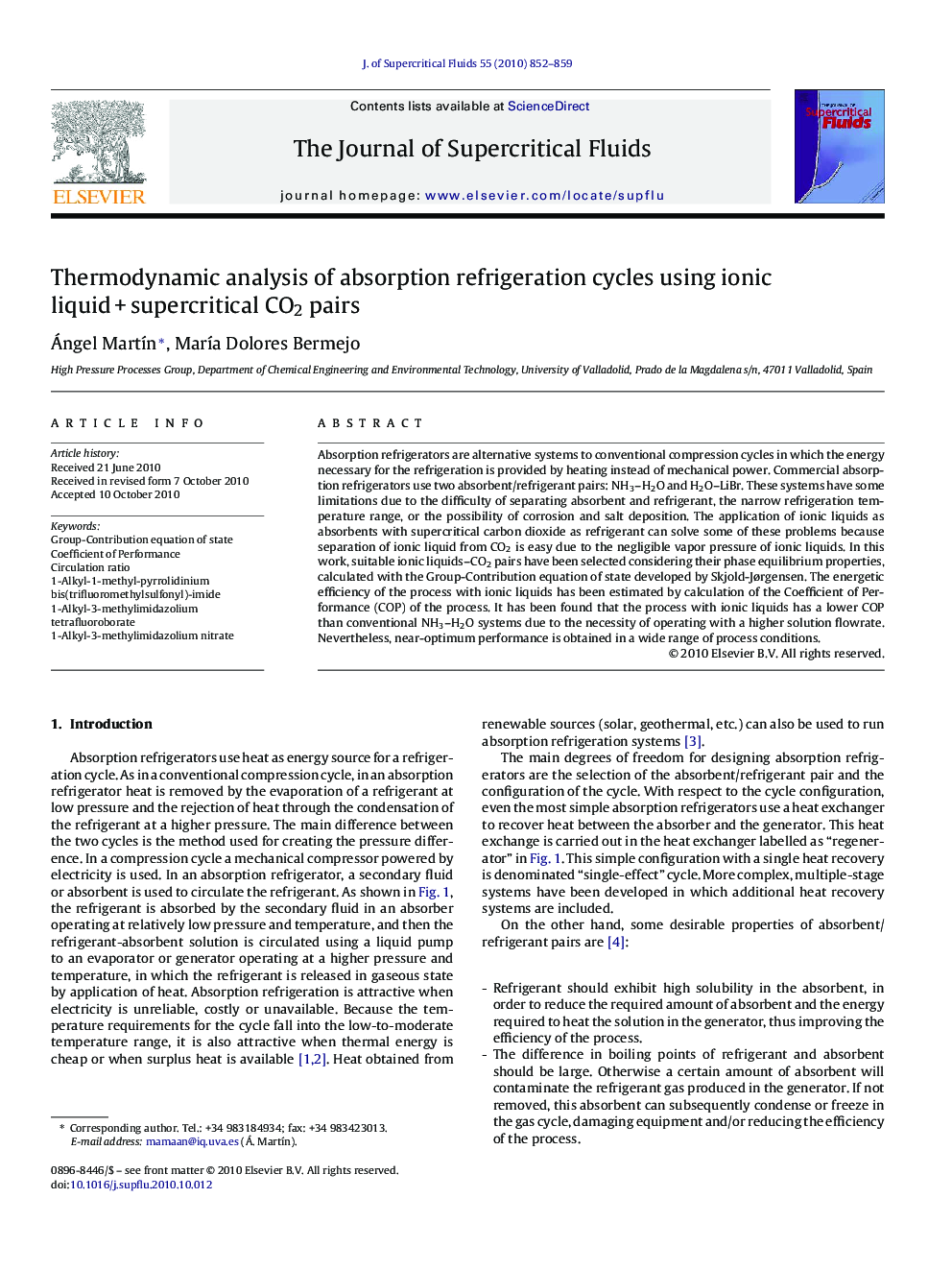| Article ID | Journal | Published Year | Pages | File Type |
|---|---|---|---|---|
| 231306 | The Journal of Supercritical Fluids | 2010 | 8 Pages |
Absorption refrigerators are alternative systems to conventional compression cycles in which the energy necessary for the refrigeration is provided by heating instead of mechanical power. Commercial absorption refrigerators use two absorbent/refrigerant pairs: NH3–H2O and H2O–LiBr. These systems have some limitations due to the difficulty of separating absorbent and refrigerant, the narrow refrigeration temperature range, or the possibility of corrosion and salt deposition. The application of ionic liquids as absorbents with supercritical carbon dioxide as refrigerant can solve some of these problems because separation of ionic liquid from CO2 is easy due to the negligible vapor pressure of ionic liquids. In this work, suitable ionic liquids–CO2 pairs have been selected considering their phase equilibrium properties, calculated with the Group-Contribution equation of state developed by Skjold-Jørgensen. The energetic efficiency of the process with ionic liquids has been estimated by calculation of the Coefficient of Performance (COP) of the process. It has been found that the process with ionic liquids has a lower COP than conventional NH3–H2O systems due to the necessity of operating with a higher solution flowrate. Nevertheless, near-optimum performance is obtained in a wide range of process conditions.
Graphical abstractFigure optionsDownload full-size imageDownload as PowerPoint slide
